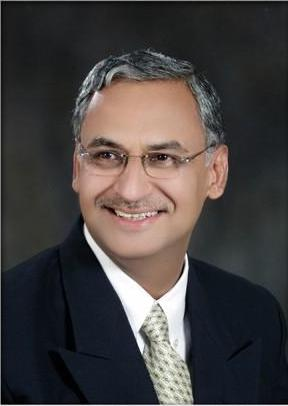"Small measures essential for diarrhea treatment"
February 21, 2014 | Friday | Features | By BioSpectrum Bureau
"Small measures essential for diarrhea treatment "
Dr Naveen Thacker, president, Asia Pacific Pediatric Association (APPA)
About Author: Dr Naveen Thacker, a well known child specialist of Gandhidham is the president elect of Asia Pacific Pediatric Association (APPA). He was also recently elected as CSO Alternate representative to GAVI Alliance Board, and also as Coordinator of Development of International Pediatric Association (IPA).
-------------------------------------------------------------------
It is a sad reality the Indian children are still dying because health services continue to be provided piecemeal and those most at risk are not being reached. Children who are poor, hungry and living in remote areas are most likely to be visited by pneumonia and diarrhea the 'forgotten killers'. A quick look at the diarrhea figures say that India loses close to 100,000 children to this very manageable and preventive disease.
Globally, diarrhea takes the lives of more than 600,000 children every year. It is one of the lead¬ing killers of children under the age of five worldwide after acute respiratory infections like pneumonia. Sadly, diarrhea continues to be the most common cause of illness and its burden is greatest in developing countries of Africa and Asia.
In the Indian context, severe episodes of diarrhea leave a lasting impact - the specter of malnutrition, which is a factor in stunted growth. Research has consistently shown that if a child is malnour¬ished or regularly ill during the first few years of life, there are consequential negative effects on future cognitive development, education, and productivity.
For a long time now, it has been established that some very small measures can check the loss of life due to diarrheal disease. Nine out of 10 child diarrheal disease deaths could be prevented by interventions available today. It is important to recognize that diarrhea continues to be a 'silent emergency' and there is a need to raise awareness around diarrheal disease burden and the existence of proven prevention and treatment interventions.
Alongside the recognition that this is an emergency for the country, there is an urgent need to drive demand generation to scale up ORS and zinc for diarrhea treatment. For almost a decade ORS and zinc have been low-cost solutions that have proven to be critical components in diarrhea management. Given the high incidence of the disease in India, it is important to emphasize that more needs to be done to make this more accessible to communities. Creating more awareness about fatalities due to dehydration, need to be generated so that care givers recognize early signs and know exactly what to do.
Proven diarrheal disease prevention methods include improved safe water, sanitation, and hygiene, exclusive breastfeeding, and vaccines preventing rotavirus. When diarrhea does occur, it can be effectively treated with oral rehydration therapy (ORT)/oral rehydration solution (ORS), zinc and other micronutrients along with contin-ued feeding.
Interventions available today to prevent and treat diarrheal disease include, exclusive breastfeeding and optimal complementary feeding, exclusive breastfeeding (no additional food and fluids) provides infants six months of age and younger with essential nutrients and immune factors that both protect them from diarrheal disease and speed diarrhea recovery when episodes occur.
Optimal comple¬mentary feeding with continued breastfeeding for infants and young children ages 6 to 24 months is essential to ensure they are healthy, well nourished, and better able to survive an episode of diarrhea.
Apart from ORS, zinc and other micronutrients are simple, inexpensive and critical for treating diarrheal episodes. In India diseases related to inadequate water, sanitation and hygiene continue to be its most deadly public health problems, triggering cases of diarrhea. Treating water with inexpensive point-of-use water quality interventions at home can prevent episodes of diarrhea by roughly 50 percent. Simple handwashing with soap at critical times can reduce diarrhea by 45 percent.
Alongside all these interventions, vaccines against rotavirus, the most common and lethal cause of severe diarrhea in children, have also proven saving lives around the globe.
The crux to checking diarrheal diseases thus continues to be coordinated approach that combines proven, cost effective prevention and treatment solutions is highly effective at reducing diarrheal disease - a leading global killer of children.
Last year the WHO and UNICEF launched the integrated Global Action Plan for Pneumonia and Diarrhoea (GAPPD) 'Ending Preventable Child Deaths from Pneumonia and Diarrhoea by 2025'. India would do well to align its goals towards saving children under five of age with the GAPPD which provides an integrated framework of key interventions proven to effectively prevent and treat childhood pneumonia and diarrhea. Although effective interventions have been well established, they are not always promoted together to achieve maximum benefit.
Next year will be a watershed year for public health in India as far as accountability to Millennium Development Goal number four - to reduce under-five mortality by two-thirds is concerned. The country's leaders have been working towards this and even as we begin the countdown, it is important to understand that if India just prioritizes diarrheal disease control among its wide range of child health programs this goal will still be within reach.
Unfortunately for India, over the last decade, momentum towards dealing with diarrhea has slowed down and children are not getting access to simple, lifesaving prevention and treatment options they need. Diarrheal disease was once a leading public health priority. But likely many other countries due to declines in research and funding commitments and competing global health priorities, the focus has shifted.










